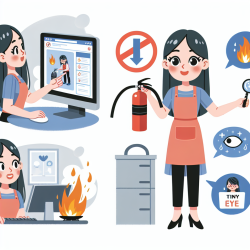Introduction
Burn injuries are a significant public health concern, especially among youth. A recent study titled Epidemiology and perceptions of non-fatal burns among select youth (15–24 years old) from Peshawar Pakistan; a sequential explanatory mixed methods study provides valuable insights into the epidemiology, risk factors, and perceptions of burns among young individuals in Pakistan. This blog aims to help practitioners improve their skills by implementing the outcomes of this research or by encouraging them to conduct further studies.
Key Findings
The study revealed some startling statistics:
- Out of 547 participants, 85 reported burn injuries within the last 12 months.
- Females were at a significantly higher risk, with an Incidence Rate Ratio (IRR) of 2.89 compared to males.
- Primary causes of burns included contact with hot objects and liquids, often occurring in domestic and vocational settings.
Risk Factors
Several sociodemographic factors were identified as significant risk factors for burns:
- Age: Youth aged 15-24 years are particularly vulnerable.
- Sex: Females are at a higher risk due to domestic roles and lack of safety knowledge.
- Family Income: Lower family income correlates with higher burn incidences.
- Parental Education: Lower educational levels of parents, especially fathers, are associated with higher burn risks.
Perceptions and Recovery
The study also delved into the perceptions of burn victims:
- Many participants attributed their injuries to personal carelessness and lack of safety knowledge.
- Family support and access to healthcare were crucial for recovery.
Practical Implications for Practitioners
Based on these findings, practitioners can take several steps to mitigate burn risks among youth:
- Educational Programs: Implement community-based interventions focusing on burn prevention and safety.
- Behavioral Interventions: Promote careful behaviors to prevent accidents, such as avoiding mobile phone use while cooking.
- Family Support: Encourage family involvement in the recovery process.
- Workplace Safety: Ensure vocational training centers provide adequate safety training and personal protective equipment.
Encouraging Further Research
This study highlights the need for more research into the epidemiology of burns, particularly in low-income settings. Practitioners are encouraged to explore further studies to identify additional risk factors and effective interventions.
Conclusion
The study provides crucial insights into the epidemiology and perceptions of burns among youth in Pakistan. By implementing the findings, practitioners can significantly reduce the incidence of burns and improve recovery outcomes for young individuals.
To read the original research paper, please follow this link: Epidemiology and perceptions of non-fatal burns among select youth (15–24 years old) from Peshawar Pakistan; a sequential explanatory mixed methods study.










